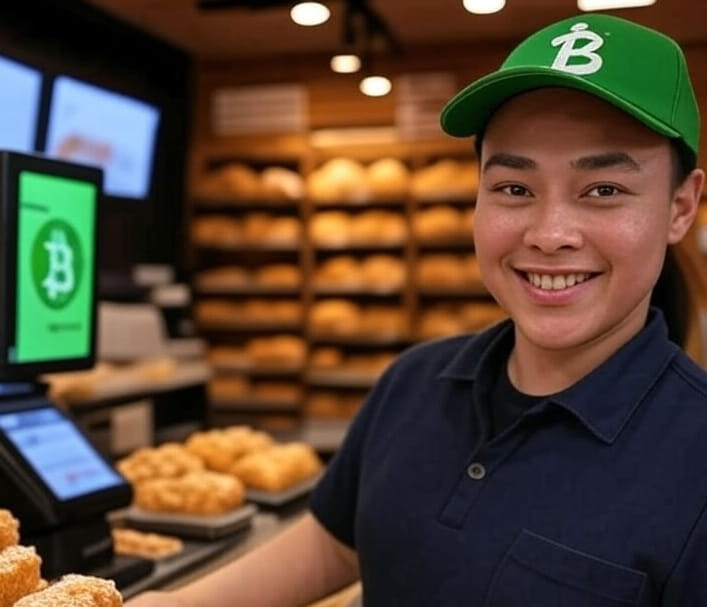
The promotion of Lightning Network payments has been successful, and the earliest fork of the Bitcoin chain, 'Bitcoin Cash', is also actively laying out its plans. Bitcoin Cash (abbreviated as BCH) forked from Bitcoin in 2017. August 1, 2017, marks the anniversary of the hard fork. Although Satoshi Nakamoto initially described Bitcoin as Peer to Peer Electronic Cash in the white paper published in 2009, the high fees at the time made it unsuitable for everyday shopping as cash. The Bitcoin Cash community forked out to focus on small payments in daily life. The Bitcoin Cash community has seen shops around the world gradually join, and several businesses in southern Taiwan have begun accepting Bitcoin Cash. Below is an introduction to the development history and overview of Bitcoin Cash.
The history of Bitcoin Cash
Bitcoin Cash was born in 2017, stemming from the internal scaling issues and disagreements over the SegWit upgrade within the Bitcoin community. The 'big block faction' within the community proposed a hard fork to increase the block size limit, which ultimately led to the birth of Bitcoin Cash, the first blockchain to fork from the Bitcoin chain. One reason why the technology of Bitcoin Cash was rejected by many Bitcoin developers and users is due to the 'big block' perspective proposed by Bitcoin Cash, advocating for an increase in the 1MB limit. This would increase the difficulty of verification as the nodes are distributed across thousands of computers globally. However, this is also why the Bitcoin Cash community claims to be the one that upholds Satoshi Nakamoto's original spirit. The Bitcoin Cash community insists on the foundation of Bitcoin's decentralization (for example, ensuring that no individual, company, or organization can tamper with Bitcoin's core blockchain). To distinguish itself from Bitcoin's orange logo, the Bitcoin Cash logo is green.
Coinbase exchange fosters the development of Bitcoin Cash
The author climbed to an old historical document from 2017, where Coinbase announced at the birth of Bitcoin Cash in 2017 that users could send and receive Bitcoin Cash, and would soon be able to buy and sell Bitcoin Cash. This move shocked the cryptocurrency circle at the time. The news prompted the price of Bitcoin Cash to soar over 30% that year, rising from $2,800 to $3,800.
The Bitcoin community split into 'big block faction' and 'small block faction'
The split in the Bitcoin community lies in how to best scale the Bitcoin network. The Bitcoin network is built upon a blockchain transaction record. A new block is added to the network approximately every 10 minutes, with a block size limit of 1 MB, meaning each block contains about 2000 transactions. The big block faction within the Bitcoin community advocates for increasing the 1MB limit to allow the network to process more transactions per hour, but larger blocks will increase the storage and bandwidth requirements of the Bitcoin network. This 'big block faction' is the predecessor of Bitcoin Cash.
'Small block faction' advocates for the SegWit upgrade plan, which took effect in 2017. It allows for another 'off-chain' trading mode, with supporters of small blocks placing long-term scaling on the Lightning Network, a new payment network built on the side of Bitcoin. The Lightning Network uses payment channels, allowing users to make multiple off-chain transactions that will ultimately be consolidated into a single transaction.
The debate peaked in August of that year, when members of the 'big block faction' established a new version of Bitcoin called 'Bitcoin Cash'. 'Bitcoin Cash' supports blocks of up to 8 MB, with the founders promising to increase the block size further as needed to avoid congestion.
There have been many Bitcoin forks in the past, but this time is unusual because it forked natively from the existing Bitcoin blockchain. Before August 1, the blockchains of Bitcoin and Bitcoin Cash were identical. This means that anyone who owned a Bitcoin before the fork on August 1 would automatically own a Bitcoin Cash after the new network launched. This fork created billions of dollars in new wealth. When Bitcoin Cash was born, the price of the original Bitcoin did not significantly drop, while the newly minted Bitcoin Cash surged to around $600 each. By August of that year, the total circulating value of Bitcoin Cash soared from about $10 billion to $60 billion.
How does Bitcoin Cash work?
The total supply cap of Bitcoin Cash is 21 million coins. Bitcoin Cash employs a proof-of-work (PoW) consensus mechanism similar to Bitcoin. Miners validate transactions and create new blocks by solving complex computational problems. The block size of Bitcoin Cash allows for faster transaction processing, striving to maintain low fees.
What are the application scenarios of Bitcoin Cash?
Bitcoin Cash has various application scenarios. It can be used for peer-to-peer payments between individuals, as well as for paying service fees to participating merchants in physical stores and e-commerce. The financial structure may lean more towards small transactions, such as tipping content creators, rewarding app users, or covering daily food expenses. Bitcoin Cash also develops remittances and cross-border trade, with other applications including token staking, contracts, and other DeFi transactions.
Taiwanese fried chicken shops join the BCH payment landscape
Currently, there are several small businesses in Taiwan that have joined the Bitcoin Cash community, allowing payments via Bitcoin Cash through built-in POS systems on mobile phones, including stores like the Fried Chicken God in Kaohsiung. Friends interested in knowing which stores accept Bitcoin Cash can check the Honest Map and Bitcoin Map to find nearby merchant locations.
This article Bitcoin Cash (BCH) actively promotes global payments, and there are also merchants in Taiwan that accept it for buying fried chicken first appeared on Chain News ABMedia.


